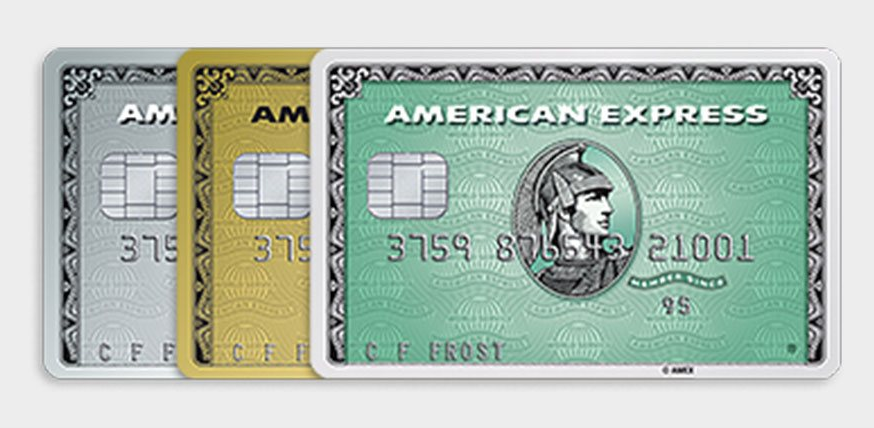American Express offers a diverse selection of cards tailored to meet the needs of various customers. The company first entered the consumer credit market in 1958 with the original American Express card, which was later rebranded as the Green card. The Gold card was launched in 1966, followed by the addition of the Platinum card to the lineup in 1984.
The only other American Express charge card introduced in the past 38 years is the Centurion (Black) card. Since that one is exclusive and only available by invitation, I’m going to focus on the cards which anyone can apply for. American Express also offers charge cards for business use, starting with the Corporate Card in 1966. Those cards have different bonus categories focused on business expenses, so I’ll concentrate on the personal cards here.
It’s true that American Express offers many other cards (fourteen others, if my counting is correct), but those cards are credit cards, while the original cards are still, essentially, charge cards.
What’s the difference?
I’m glad you asked!
Here’s a chart from Credit Karma’s website:
Charge card vs. credit card
| Charge card | Credit card | |
| Has a preset spending limit | No | Yes |
| Requires you to pay the bill in full each month | Generally yes | No (but you must make at least the minimum payment and watch out for APR) |
| Has late payment fees | Generally yes | Generally yes |
| Has an annual fee | Depends on the card, but generally yes | Depends on the card, but generally yes |
| Has a wide selection of card issuers | No | Yes |
| Holds you responsible for unauthorized transactions | Generally no | Generally no |
As you can see, the main difference is that a charge card needs to be paid in full each month, while you can carry a balance on a credit card (while paying interest). The key phrase here is “generally” because American Express, the main issuer of charge cards, has constantly been morphing its charge cards to be more like credit cards. In fact, you’re now able to carry a balance on your Green and Gold American Express cards with the Plan It and Pay Over Time features. American Express will issue a “limit” for your Pay Over Time charges.
A qualifying purchase for Plan It is at least $100 (or qualifying amounts of $100 or more, if you have a Consumer Card with a Credit Limit) and does not include a purchase of cash or cash equivalent, balance transfers (if offered), a purchase subject to foreign transaction fees, or any fees owed to us (including annual membership fees); as long as it remains within your Amount Available to Plan and does not exceed your Pay Over Time Limit or 95% of your Credit Limit, as applicable.
Carrying a balance, having a credit limit and paying interest charges sounds like having a credit card, but AMEX still considers these to be charge cards, so I will as well.
American Express has updated the benefits of these cards in recent years. Additionally, AMEX has introduced a new restriction on these cards, known as the “Family” or “Little Brother” rule, which limits the cards for which you are eligible to receive a bonus.
Here’s a breakdown of the three American Express Charge Cards:
American Express Green Card
The American Express Green card (or as I call it, the card Sharon will never get rid of) (Note from Sharon: Be quiet. I know the number by heart. Why would I want to get rid of a credit…sorry, a CHARGE card number that I can recite off the top of my head?)
This card has a $150 annual fee. The Green Card earns three Membership Rewards points per dollar on eligible travel purchases, including airfare, hotels, cruises, car rentals, campgrounds, trains, taxicabs, rideshare services, tours, ferries, tolls, parking, buses, subways, third-party travel websites, and amextravel.com. The card also earns three Membership Rewards points for each dollar charged at restaurants worldwide. You earn 1 Membership Rewards point for each dollar spent on the card for all other charges.
The Green Card also provides a $189 yearly credit for CLEAR. If you were going to pay this fee anyway, the card’s adjusted yearly cost drops to $50. There’s also a $100 yearly LoungeBuddy credit, but I’ve yet to hear from anyone who’s taken advantage of this benefit.
American Express Gold Card
The annual fee for the Gold card is $250. It earns Membership Rewards points for purchases and has the following bonus categories:
- Earn 4X Membership Rewards points at US restaurants
- Earn 4X Membership Rewards points at US supermarkets, on up to $25,000 per year in purchases
- Earn 3X Membership Rewards points on flights booked directly with airlines or on amextravel.com
The card also provides the following credits. Note that I do not consider these the same as getting cash back to offset the annual fee, as there are many restrictions on using the credits.
- $120 Dining Credit – Earn up to a total of $10 in statement credits monthly when you pay with the Gold Card at Grubhub, The Cheesecake Factory, Goldbelly, Wine.com, Milk Bar, and participating Shake Shack locations. This can be an annual savings of up to $120. Enrollment required.
- $120 Uber credit – Earn up to $10 in monthly statement credits to all vehicle types with Uber, orders on Uber Eats and any other services to which Uber permits Uber Cash to be applied.
The Gold Card’s bonus categories make it the best way to earn Membership Rewards for those who spend a lot at restaurants and supermarkets. However, the $250 annual fee and limited places to use the credits make it less of an all-around card than it previously was. That’s why I told my dad to get rid of this card before his renewal.
American Express Platinum Card
I have a love/hate relationship with the AMEX Platinum card. I love its benefits, but I hate the cost, the difficulty of getting the credits, and the limitations on the same benefits that I love. However, I’ve kept the card for the last few years because I’ve received more value from the card than I spent on the fee.
The AMEX Platinum card has a $695 annual fee. For that, you receive a laundry list of benefits but very few bonus categories.
- 5X Membership Rewards points on flights booked directly with airlines or with American Express Travel
- 5X Membership Rewards points on prepaid hotels booked on amextravel.com
The Platinum card also has a $200 Airline Fee Credit, up to $200 yearly in Uber credits, TSA PreCheck or Global Entry reimbursement, $189 CLEAR reimbursement, lounge access, and other benefits.
The American Express Platinum card may not be suitable for everyone. However, if the available credits align with your spending habits and you frequently travel while taking advantage of the airport benefits, this card could prove to be extremely valuable.
Final Thoughts
American Express has done just about as much as they can to make their charge cards similar to credit cards without actually turning them into credit cards outright. For those of us interested in collecting points, we like these cards because you can earn a sign-up bonus for each flavor of American Express card, and these cards don’t count against the number of credit cards AMEX allows you to have with them (which I believe is still capped at five cards).
I find the American Express Green Card the most interesting right now. With the ability to earn a large number of Membership Rewards with bonus points for travel and restaurant expenses and a $189 yearly CLEAR statement credit, it’s clearly a card with which most people would be able to justify the annual fee if they were planning to get CLEAR anyway. With the new family rule for signup bonuses, it’s also the best place to start if you don’t have any of the AMEX charge cards.
On the other hand, the Gold Card and Platinum Cards have value for people who use all of the perks and credits or spend heavily in the bonus categories. When it comes to these choices, Your Mileage May Vary.
Want to comment on this post? Great! Read this first to help ensure it gets approved.
Want to sponsor a post, write something for Your Mileage May Vary, or put ads on our site? Click here for more info.
Like this post? Please share it! We have plenty more just like it and would love it if you decided to hang around and sign up to get emailed notifications of when we post.
Whether you’ve read our articles before or this is the first time you’re stopping by, we’re really glad you’re here and hope you come back to visit again!
This post first appeared on Your Mileage May Vary
Join our mailing list to receive the latest news and updates from our team.

